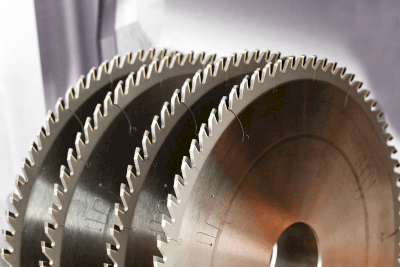What Is a Chip Saw?
 A Chip Saw refers to a blade attached to a circular saw used for cutting materials such as wood, steel, and aluminum.
A Chip Saw refers to a blade attached to a circular saw used for cutting materials such as wood, steel, and aluminum.
A circular saw for metalworking made of HSS steel is called a metal saw, and the brazed carbide tips on the blade edge characterize a chip saw.
While it can efficiently and cleanly cut wood and is user-friendly for processing, it is a hazardous tool that can cause serious injury if used or mishandled.
Uses of Chip Saw
Chip saws are mainly used for cutting wood, but different materials can be cut depending on the type of chips used.
The following four types of chips are used for chip saws:
- Carbide chips for wood processing
- Cermet chips for metalworking
- Sintered diamond for siding
- Ultrafine carbide particles for plasterboard
In addition, chip saws are also used for cutting aluminum sashes and plywood, making them indispensable tools in the construction field.
Principle of Chip Saw
Chip saws are always labeled with a description of the blade’s properties, so it is important to check the description and select the appropriate blade.
The following is how to read the description:
If there is a Chip Saw with “100 x 1.0 x 30T(P)”:
100 represents the outer diameter of the blade, which must be at least 6 times longer than the thickness of the material to be cut.
1.0 represents the thickness of the blade. The thinner the thickness, the lower the load, and thus the lower the power motor can process. However, the lower the rigidity, the higher the risk of cracking. A thicker blade can be machined more smoothly because of the reduced vibration.
30T(P) represents the number of blades. A small number of blades allows for faster cutting but has the disadvantage of a rough cut surface and more burrs.
If the number of blades is large, the cut surface is finished cleanly, and in the case of thin tin or plywood, the board is less likely to be violent, making it effective for cutting thin sheets. On the other hand, cutting speed is slower, so it is not suitable for thicker materials.